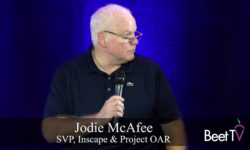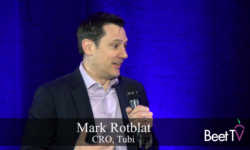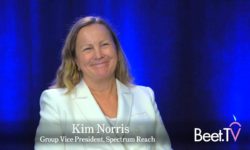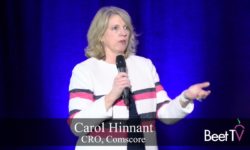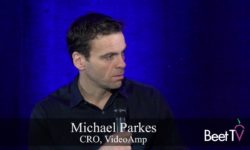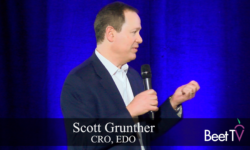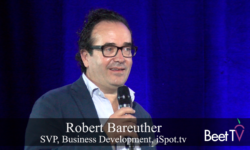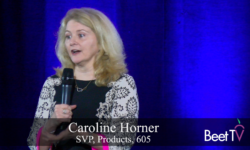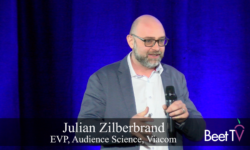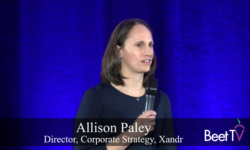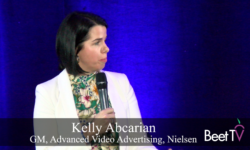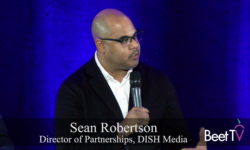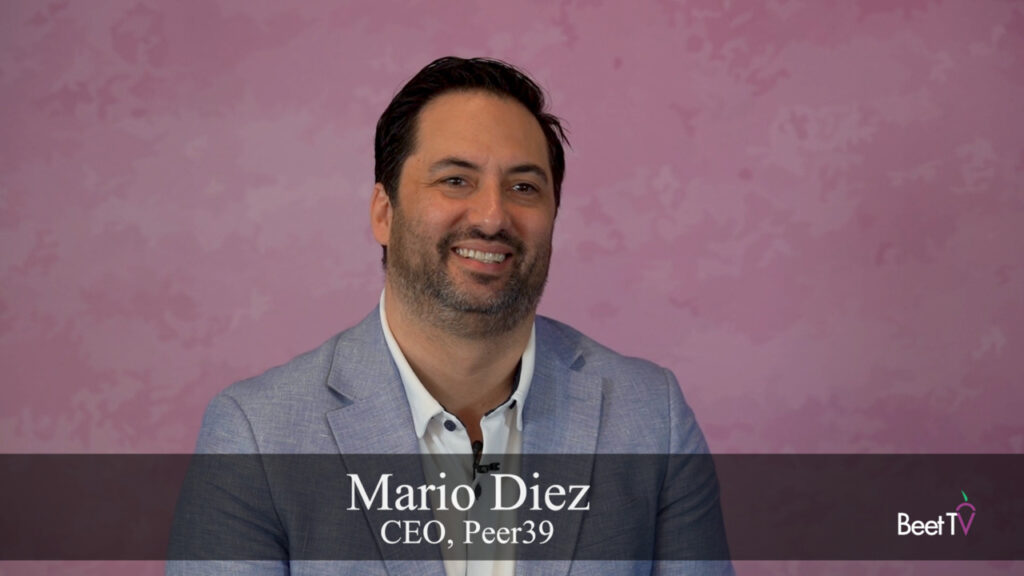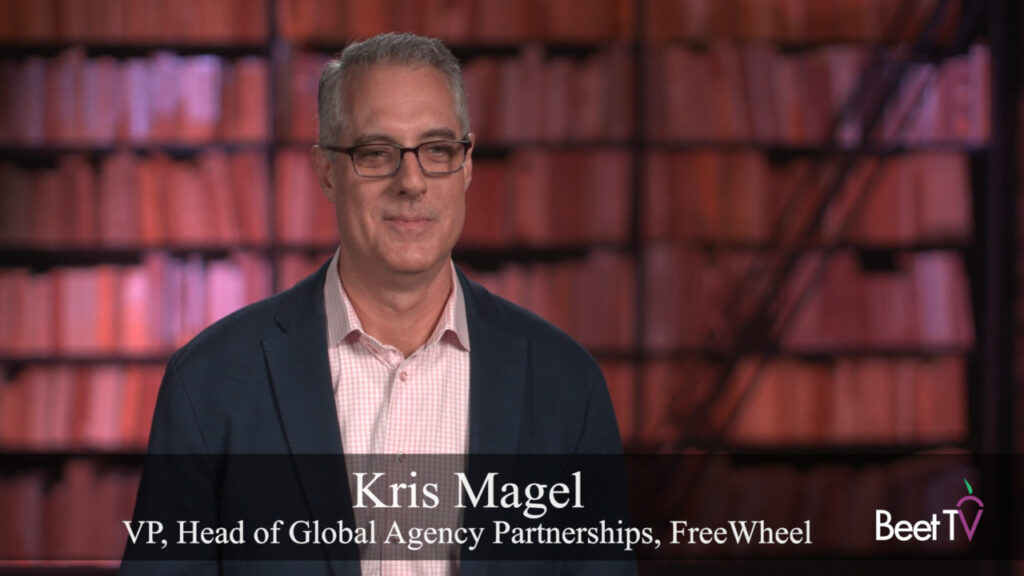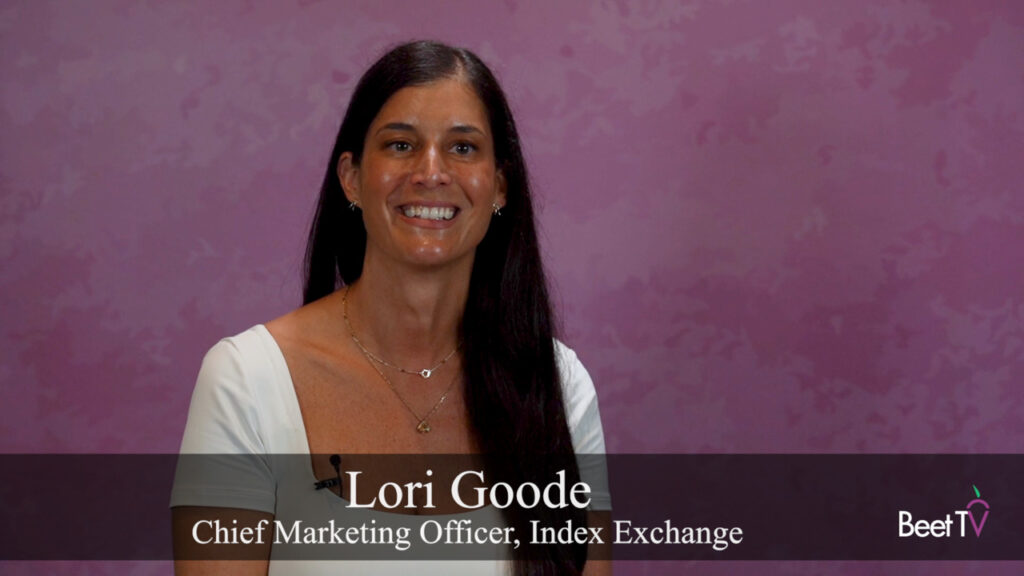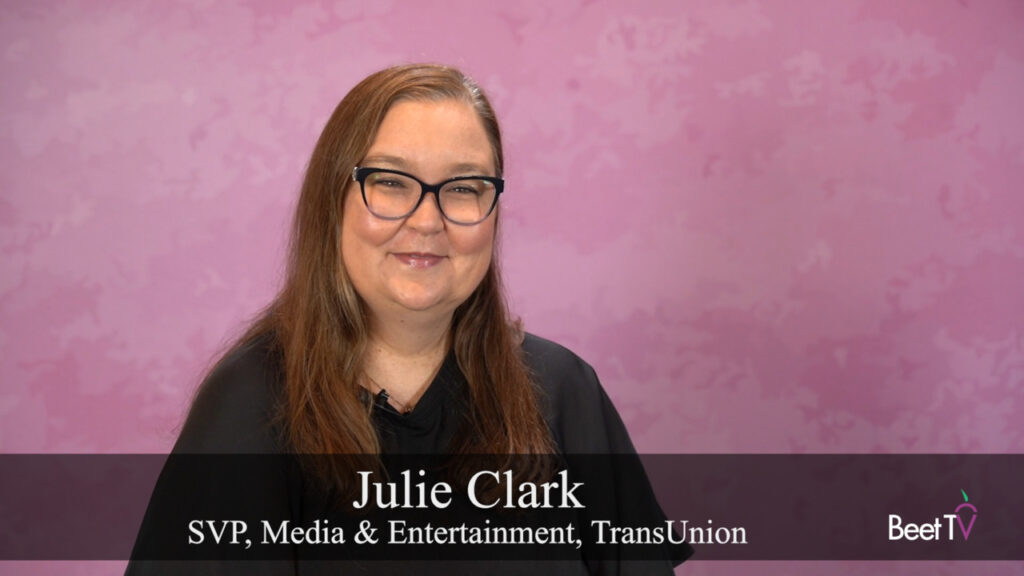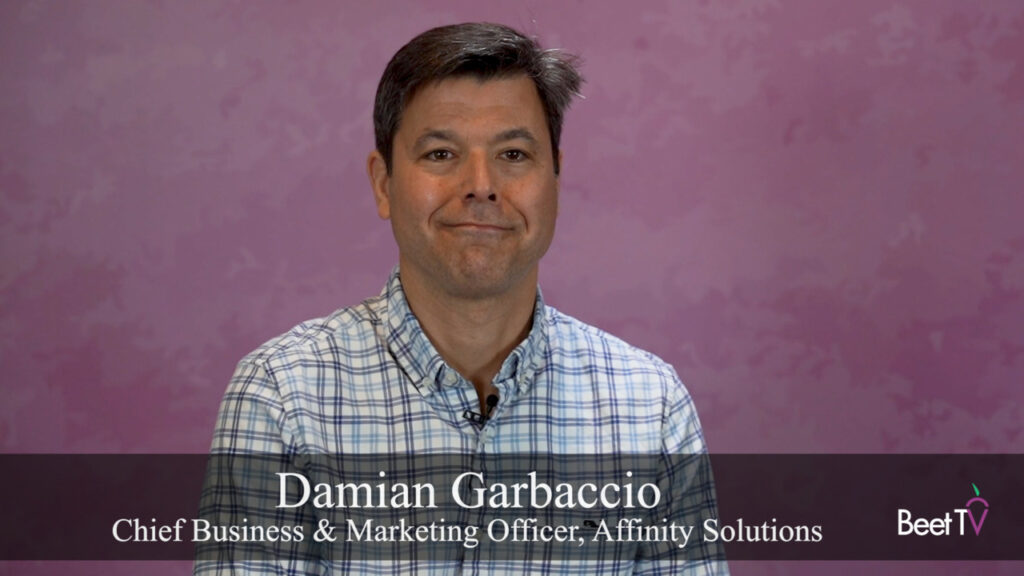SAN JUAN, PR — The ability to send tailored ads to individual TV households has been talked about for a long time.
Now, after many early attempts, finally addressable TV is reaching scale.
But just how advanced is the infrastructure behind “advanced TV”?
In a Beet Retreat panel, Addressable Tech: Next-Gen Solutions: Fixing the Plumbing, three industry executives were asked that question.
- Chris Curley, Partner Lead, Google
- Adam Lowy, Chief Commercial Officer, Telaria
- Jodie McAfee, SVP, Inscape & Project OAR
All agreed that addressable TV capability and viewer scale has grown leaps and bounds since the earliest attempts a decade ago. But the panel also raised concerns that the infrastructure is not nearly as mature as it should be.
Ad delivery takes too long
Telaria’s Adam Lowy said lining up ads to support personalized play-out is not as frictionless as believed.
“In television, you have to send the (ad) spot to the box over the bird, has to sit in the box,” he said. “It takes about three or four days, maybe a week, to acquire (the ad), and then you go ahead and serve it.
“You can call that ‘mature’, I call that ‘we’ve got to move on from that at some point’.”
Addressable needs simplification
Telaria’s Adam Lowy said, right now, selling addressable ads to buyers is too complex.
“When you’re out there selling addressable (ads), it gets into the weeds so fast (that) you’ve essentially lost the sell, you’ve lost the mojo,” he said. “Because you get so into how it works and all the tech about it.
“I think we have to simplify the process and really state what addressable (advertising) is when you’re out there. And I think that is one of the things we need to fix.”
Long way to go
Google’s Chris Curley explained that, relative to digital media, addressable TV still needs to focus on open ecosystems.
“If you want to continue down a path where ads become more meaningful to the user and you can protect the privacy of the user and their wishes, as well as create meaningful measurement across all of these screens so that all of this works well at scale, we have a very long way to go,” he said.
“We need to focus on interoperability. We need to make sure that we’re working together and we’re using open standards in a way that works for everyone.”
Project OAR paddles ahead of Canoe
Project OAR is beginning to issue over-the-top firmware updates to 10 million connected TV sets, to better deliver ads from FreeWheel, Google and Xandr, said the outfit’s Jodie McAfee.
OAR is a consortium kicked off by Vizio’s own ad-targeting division Inscape to achieve better scale in the sale of connected TV advertising,
“We’ve also hit our milestones, one of which was to have a live demo at CES, which we did.We actually ran six different demos with members, two of which were live feeds broadcast into the Vizio space at CES.
“We (also) distributed the measurement spec. We will start pushing the solution to Vizio TVs in a firmware update next week. We’re on track to have 10 million TVs live by the upfront.” The discussion took place on February 5.
The panel was led by Beet.TV editorial and strategy director Jon Watts.
This video was produced at the Beet Retreat San Juan 2020 sponsored by 605, DISH Media, NBCU, Roundel & Tubi. For more videos from the series, please visit this landing page.







